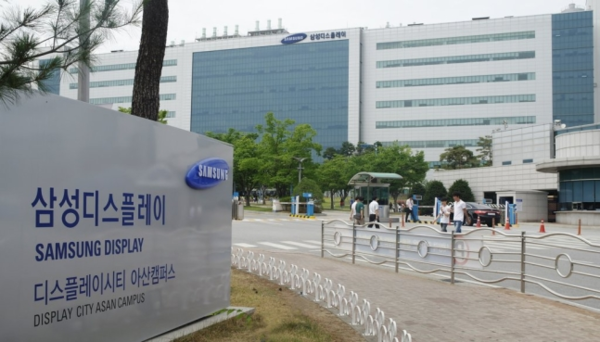Input 2021.01.26 06:00
LG, 1st in OLED for large TVs and vehicles
LG is active in OLED material patents

According to the Ministry of Trade, Industry and Energy on the 26th, Korea’s OLED exports this year are expected to increase by 19.6% from the previous year to 13 billion dollars (about 14.32 trillion won). OLED exports have exceeded 10 billion dollars a year for three consecutive years starting in 2018. This is because domestic companies are holding a rein in converting business from liquid crystal display (LCD) to OLED.
OLED is a light emitting diode (LED) based on organic compounds that emit light by itself when voltage is applied. Unlike LCDs that require a separate light-emitting source, a backlight unit (BLU), they emit light by themselves to realize image quality close to natural colors.
Since Samsung Display mass-produced OLED for the first time in the world in 2007, it has been expanding its business centering on smartphones. In the small and medium-sized OLED market for smartphones, it maintains the world’s No. 1 market with 80% market share. Market research firm Omdia predicts that Samsung Display’s smartphone OLED sales in the first quarter of this year will be $5.18 billion (about 5.7 trillion won), up 30% from the same period last year. It was the first quarter of the year to surpass 5 billion dollars.
In the new year, it announced plans to release 10 types of OLED displays for laptops within this year, and announced plans to expand the field. In addition to this, it is also expanding its scope to automobiles and game consoles. To this end, it also unveiled’Samsung OLED’, a new brand logo to be used for OLED products at the beginning of this year. As the world’s first OLED mass-produced, Samsung Display explained that OLED is the confidence of Samsung.

In the automotive OLED market, LG Display is also ranked first. As of 2019, it ranked first in the automotive display market worth 10 trillion won per year. It is observed that the market share has continued to increase as the collaboration with German Mercedes-Benz continues. As of the third quarter of this year, Omdia’s forecast is around 20%. In addition, it is also taking a 20% market share in monitors, laptops and tablets.
An industry insider said, “While Samsung Display is focusing on small-sized smartphones and more than medium-sized monitors, LG Display is expanding its base from large-sized to small and medium-sized.”
LG is more active than Samsung for patent applications in the OLED material field. According to the Korean Intellectual Property Office, patent applications for OLED materials of Samsung affiliates reached 161 in 2016, but dropped to 60 in 2019. On the other hand, during the same period, LG affiliates surged from 86 to 295. Samsung affiliates include Samsung Display, Samsung Electronics, and Samsung SDI, while LG affiliates are LG Display, LG Electronics, and LG Chem.
An official from the Korean Intellectual Property Office said, “(OLED material field) is an industry that only processes the process by importing compounds, so it was judged that the added value was low, or the number of patents (Samsung affiliated companies) decreased, while LG seems to be trying to do anything.”
